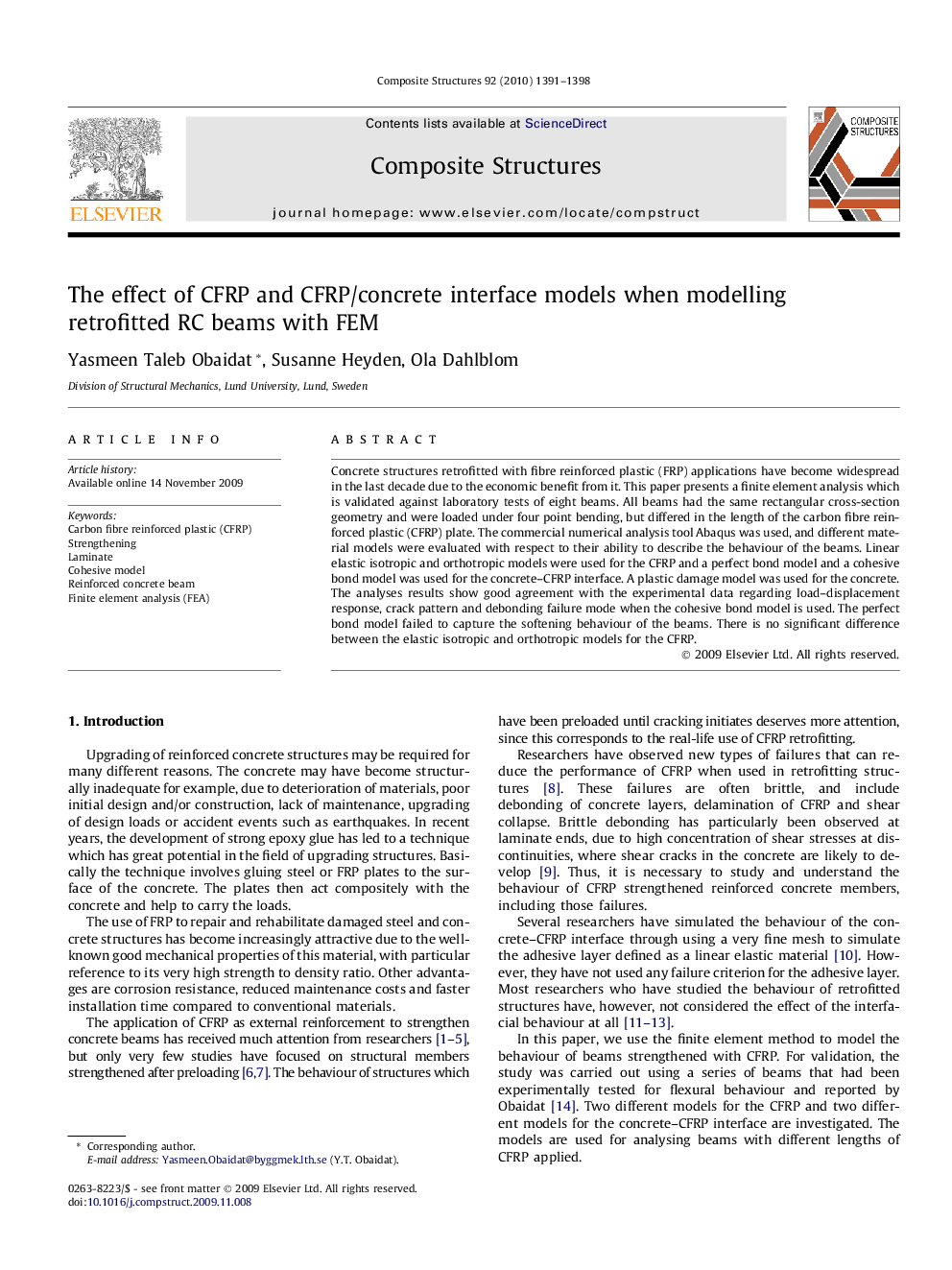| Article ID | Journal | Published Year | Pages | File Type |
|---|---|---|---|---|
| 253010 | Composite Structures | 2010 | 8 Pages |
Concrete structures retrofitted with fibre reinforced plastic (FRP) applications have become widespread in the last decade due to the economic benefit from it. This paper presents a finite element analysis which is validated against laboratory tests of eight beams. All beams had the same rectangular cross-section geometry and were loaded under four point bending, but differed in the length of the carbon fibre reinforced plastic (CFRP) plate. The commercial numerical analysis tool Abaqus was used, and different material models were evaluated with respect to their ability to describe the behaviour of the beams. Linear elastic isotropic and orthotropic models were used for the CFRP and a perfect bond model and a cohesive bond model was used for the concrete–CFRP interface. A plastic damage model was used for the concrete. The analyses results show good agreement with the experimental data regarding load–displacement response, crack pattern and debonding failure mode when the cohesive bond model is used. The perfect bond model failed to capture the softening behaviour of the beams. There is no significant difference between the elastic isotropic and orthotropic models for the CFRP.
